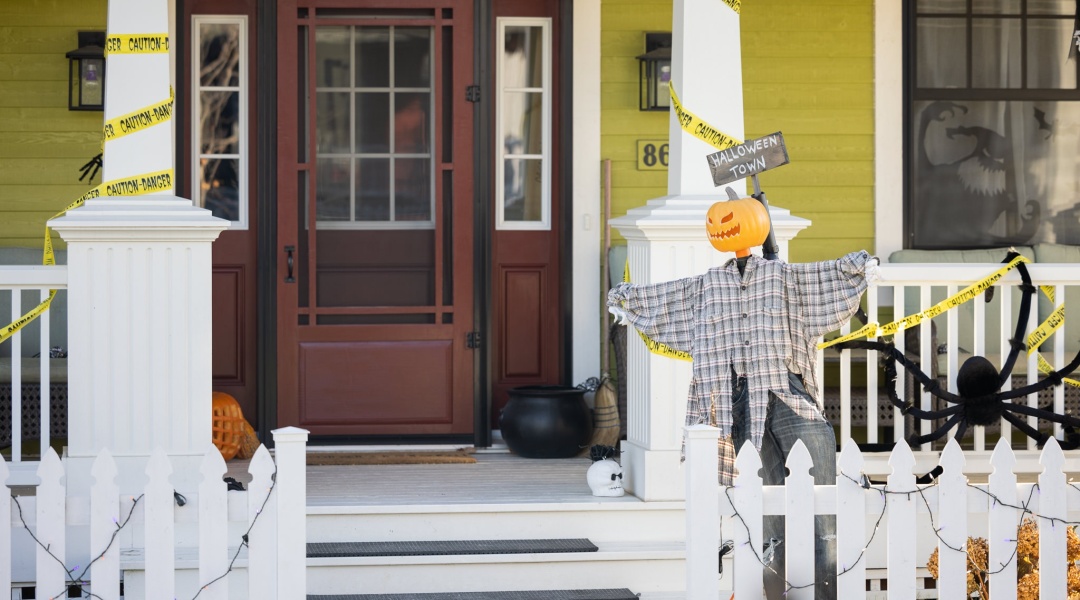The Trick-or-Treat Test
published September 11th, 2024
Halloween is almost upon us! In neighbourhoods across North America, decorations are going up, kids are picking out costumes, and adults are buying unfathomable amounts of candy. What should follow is a boisterous evening of handing out sugary treats to hundreds of trick-or-treaters, chatting with neighbours, and admiring all the inventive costumes the kids came up with. And yet, every year on November 1st, you likely see posts in your town’s community Facebook group that go something like this:
“I was so excited for Halloween, but where were all the kids?”
“Halloween isn’t what it used to be.”
“I only had one kid ring my doorbell last night!”
If you’re trying to get people involved in their communities, these types of posts are the last thing you want to see. These posts are made by residents who care…residents who wanted to spend their leisure time participating in a fun, neighbourly activity! So what happened?

Urbanist Brent Toderian says, “When it comes to candy-collecting efficiency, kids are very smart, and read communities well.” It turns out that kids instinctively recognize safe, walkable neighbourhoods. And the residents posting those comments about a lack of Halloween activity at their homes probably aren’t living in one.
So what are kids picking up on in the neighbourhoods that are Halloween hot spots? Why do these neighbourhoods feel safer and more welcoming to trick-or-treaters (and their parents) than others?
1. More houses, closer together
Also known as…density! I know, I know! This term is too often referred to in negative connotations. But, in practice, neighbourhoods where doors are closer together tend to be some of the most beloved, and walkable, neighbourhoods in our cities and towns. Kids don’t want to walk from acreage to acreage with only one “Trick-or-treat!” every 10 minutes. And guess what—neither do adults! If people aren’t walking down your street on Halloween, they’re probably not walking down it any other day of the year either.

Photo Credit: Patrick Woodbury, Le Droit taken at Landlab's Hendrick Farm project
2. Prominent front doors
Design influences behaviour. There’s no way around it. Imagine you’re a little ghoul trying to find the front door of a house, but in your way are two large cars, parked in front of a giant double garage door, and the house’s front door isn’t actually visible because it’s tucked back and off to the side somewhere. Now imagine the entire street is made up of houses just like this. It’s not exactly an appealing proposition for those aiming for the front door—namely, anyone visiting your house. Popular Halloween neighbourhoods have generally been designed in traditional urban patterns, with prominence given to front doors, and garage access moved behind the home. The result is a neighbourhood that feels like it’s been built for people instead of cars.

3. Street connections
There are two important points when it comes to streets and neighbourhood design. One is the actual design of the streets (which we’ll get to shortly), but the other is the layout of the streets. Walking is encouraged when there are direct routes through your neighbourhood. You know what’s not conducive to walking? Winding suburban roads filled with cul-de-sacs and no cross streets. More grid-like street patterns, where multiple north-south and east-west streets intersect at varying points, ensure there are multiple routes through the neighbourhood and pedestrians never have to “backtrack”—an important consideration for trick-or-treaters intent on maximizing their candy crop!
4. Streets for people
Street design is also a huge factor when it comes to the “feel” of a neighbourhood. Kids are attracted to neighbourhoods where they feel safe crossing the road at any point to check out the cool decorations on the house across the way. Parents are attracted to neighbourhoods where they feel safe letting their kids roam around with their friends in the dark. So what street design elements contribute to this sense of safety in the neighbourhood? There are unobstructed sidewalks that lead to the houses, and the houses have been pushed up closer to those sidewalks. Driving lanes are narrow and visual cues have been added (such as bumpouts/chicanes and street trees) to visually narrow the road and communicate to drivers that they need to slow down. Driveways and garage accesses have been primarily moved to side streets or rear laneways. There is enough lighting that it feels safe, but not so much lighting that you feel like you’re in a Walmart parking lot. Streets designed for people attract people, and children clue into this a lot earlier than we give them credit for.

5. Front porches and “eyes on the street”
Front porches and stoops, once distinguishing features of North American homes, fell to the wayside with the move towards car-dependent suburbs around the Second World War. A term coined by Jane Jacobs, “eyes on the street” describes how people enjoy watching other people on sidewalks and in the public realm. She argued that porches are an important architectural feature, because they allow for this passive observation, which results in an increased measure of safety and security for everyone in the neighbourhood. Porches, stoops, or even front gardens with a simple picket fence, serve as transitional private/public spaces that actively encourage casual social interactions, leading to vibrant streets with a greater sense of safety. They’re the perfect spot for all the action to take place on Halloween!

How vibrant and bustling a neighbourhood is on Halloween is a great indicator of community. But it’s also a result of its urban planning and architectural features, and whether the design of the public realm was made a priority. The spaces we occupy shape how we behave in those spaces. Build a neighbourhood where huge garage doors line the streets and roads are made for speeding? You will get a car-centric neighbourhood where everyone drives everywhere. Build a sprawling acreage with a hundred-foot driveway up to a house in the middle of a field or forest? You’ll get a lot of peace and quiet, but not very much community spirit. Street design, house design, density—these all matter when it comes to building healthy, safe, and walkable communities for people. And Halloween is just the litmus test.